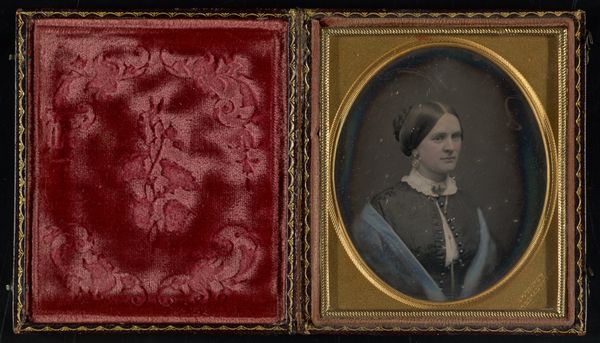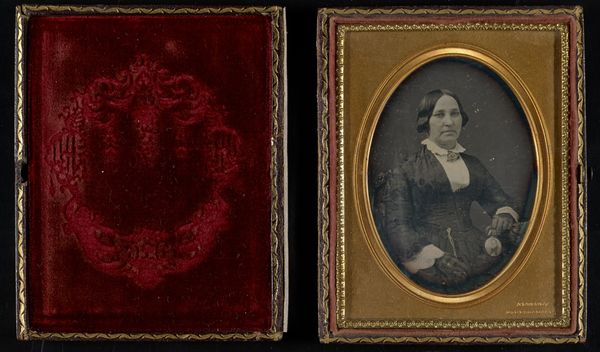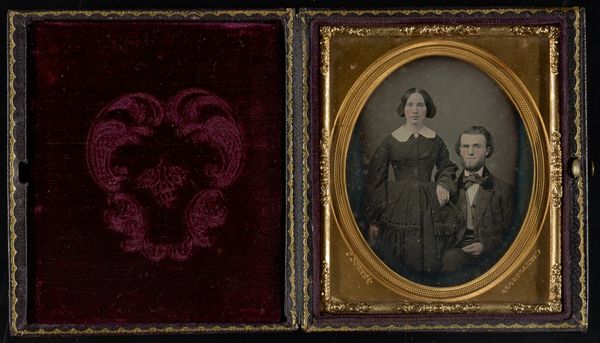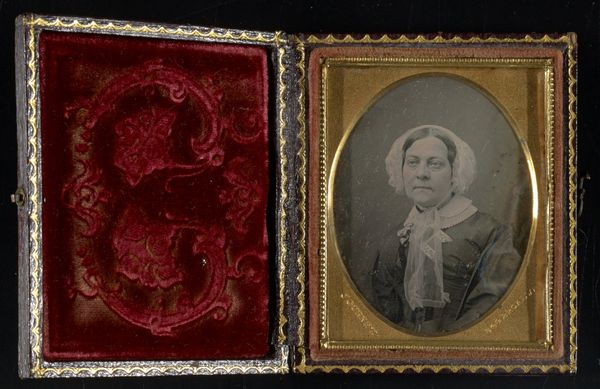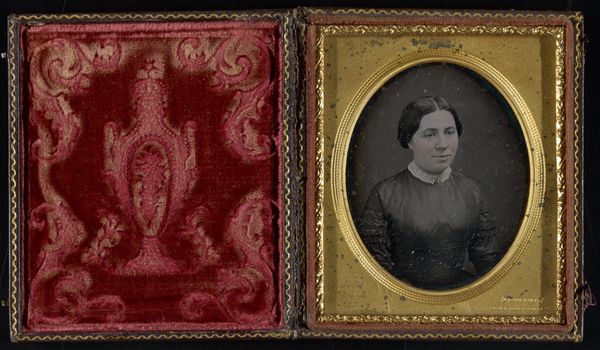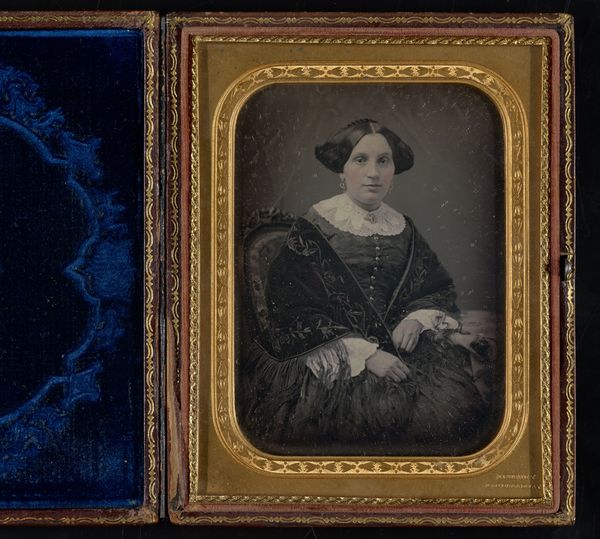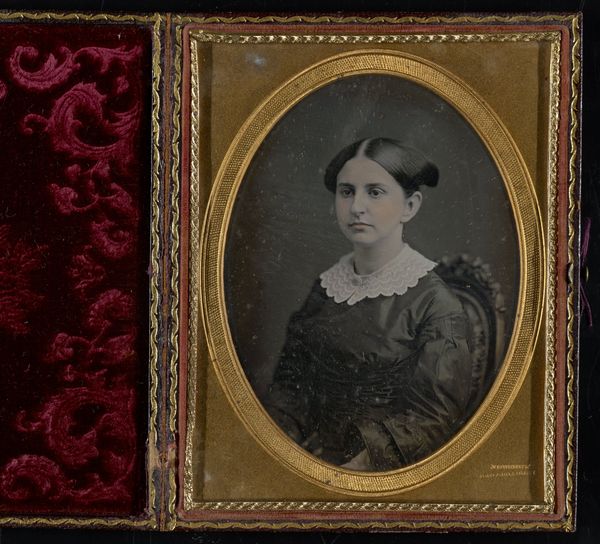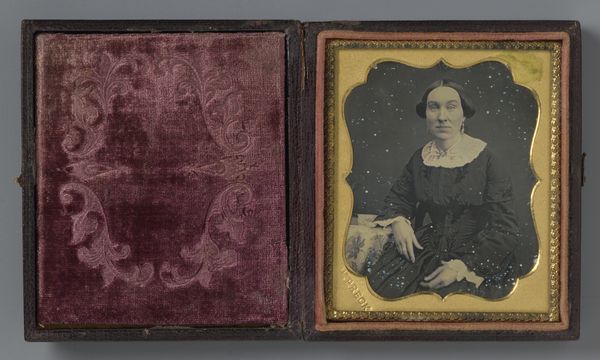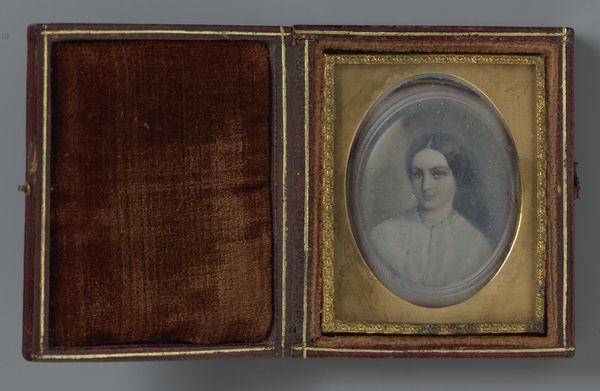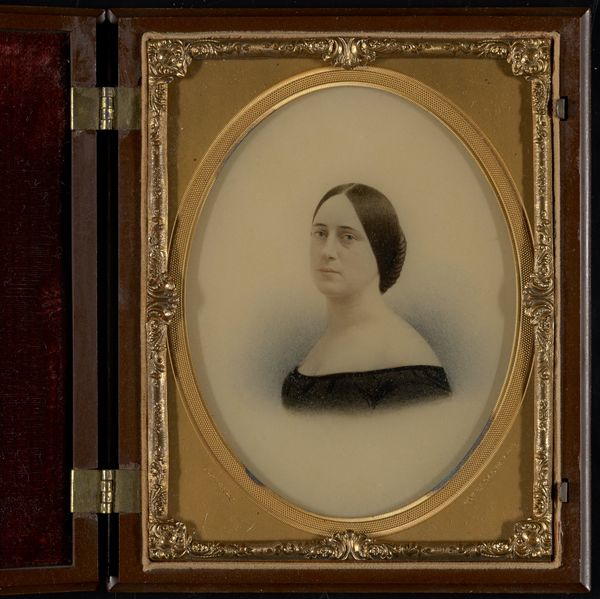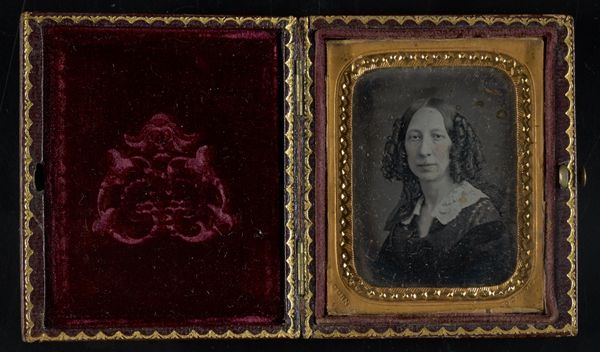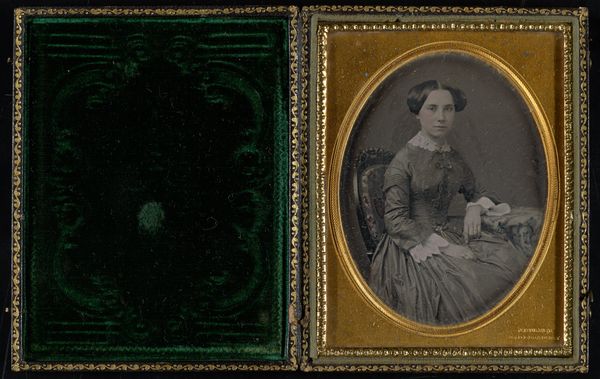![Untitled [half-length view of a young woman seated in the 'Gurney chair'] by Jeremiah Gurney](/_next/image?url=https%3A%2F%2Fd2w8kbdekdi1gv.cloudfront.net%2FeyJidWNrZXQiOiAiYXJ0ZXJhLWltYWdlcy1idWNrZXQiLCAia2V5IjogImFydHdvcmtzLzFmYzUzZjY4LWFkMGItNGYzNy04OGQxLWYzMDhiM2M2Njk4YS8xZmM1M2Y2OC1hZDBiLTRmMzctODhkMS1mMzA4YjNjNjY5OGFfZnVsbC5qcGciLCAiZWRpdHMiOiB7InJlc2l6ZSI6IHsid2lkdGgiOiAxOTIwLCAiaGVpZ2h0IjogMTkyMCwgImZpdCI6ICJpbnNpZGUifX19&w=3840&q=75)
Untitled [half-length view of a young woman seated in the 'Gurney chair'] 1852 - 1858
0:00
0:00
daguerreotype, photography
#
portrait
#
toned paper
#
daguerreotype
#
photography
#
united-states
#
decorative art
Dimensions: 3 1/4 x 2 3/4 in. (8.26 x 6.99 cm) (image)3 11/16 x 3 1/4 x 11/16 in. (9.37 x 8.26 x 1.75 cm) (mount)
Copyright: Public Domain
Editor: This is an untitled daguerreotype by Jeremiah Gurney, placing a young woman in the so-called "Gurney chair." Made sometime between 1852 and 1858, the detail achieved within the small oval is quite captivating, but I can’t help wondering about the sitter's identity and social context. What's your read on this portrait? Curator: It's a fascinating artifact, isn't it? Consider the daguerreotype itself, its emergence and rapid popularity. Photography democratized portraiture. This image presents a glimpse into the aspirations of a rising middle class, eager to participate in visual culture, mirroring the elite's traditions, but on a much broader social scale. Note how the framing and even the presentation case echoes painted miniatures, an earlier status symbol. Editor: So, this wasn't just about capturing a likeness; it was about participating in a certain social narrative? Curator: Exactly. Think about how portrait studios emerged as businesses, catering to this demand. Gurney was among the leading portrait photographers of his time, creating aspirational images for a wide audience. The 'Gurney chair' itself, visible in other portraits from the period, further underscores this staged, commercial aspect. These details reveal layers about access, representation, and the evolving concept of self within a rapidly changing society. Editor: That context really reframes the portrait. It's not just a woman in a chair anymore; it's a statement about a changing social order. Curator: Precisely! It reminds us that art, in any form, doesn't exist in a vacuum, and by viewing images with socio-historical awareness, we might unpack the nuances present even in the most intimate portrait. Editor: I’ll definitely look at 19th century portraits differently now. Thanks for your insights.
Comments
No comments
Be the first to comment and join the conversation on the ultimate creative platform.
